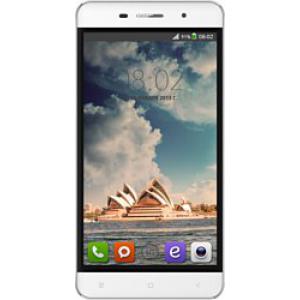Flash firmware on BQ BQS-5009 Sydney
Mobiles >> BQ >> BQ BQS-5009 Sydney| Specifications | Reviews | Secret codes |
| Unlock phone | Root phone |
| Backup | Flash Firmware | Screenshot |
How to flash BQ BQS-5009 Sydney?
Why reinstall the firmware?
Errors in the operation of the Android OS begin to appear.
Some applications stop opening.
Many programs from the Play Market do not start.
The phone restarts or shuts down randomly.
The phone began to slow down a lot.
You want to update your firmware.
Where can I find the firmware?
On the official Internet resource of the phone manufacturer.
On specialized services where users post custom or official OS.
What should be done before installing the firmware?
Create a backup copy of user data, contacts and photos and transfer it to your computer.
Insert your SD card into your phone. An SD card is needed to write firmware to it.
Remember your smartphone model.
Charge your phone fully.
Find and download the archive with Firmware.
Installing TWRP Recovery
Install the Official TWRP App from the Play Store on your phone.
When you start the application for the first time, you need to give consent to future manipulations, as well as to give consent to granting the application Superuser rights and click the 'OK' button.
After moving to the next screen, select the 'TWRP FLASH' item and provide the application with root rights.

On the main screen of the application, select 'Select Device', and find your phone model.
After selecting the phone, the application will redirect the user to a web page to download the modified recovery environment image file. Download the proposed *.img file.
When the file is loaded, you need to return to the main screen of the Official TWRP App and press the 'Select a file to flash' button. Select the file downloaded in the previous step.
Press the 'FLASH TO RECOVERY' button and confirm your choice.
When the message 'Flash Completed Succsessfuly!' appears. Click 'OK'. The TWRP installation procedure can be considered complete.
Copy the required files to the memory card. Using a PC or laptop card reader.
Insert a memory card into your phone.
To reboot into recovery, you need to use a special item in the Official TWRP App menu, accessible by pressing the button with three stripes in the upper left corner of the main screen of the application. We open the menu, select the 'Reboot' item, and then click on the 'REBOOT RECOVERY' button. The phone will reboot into the recovery environment automatically.
Firmware via TWRP

Before flashing, you need to delete all user data from the phone, this will avoid errors in the software, as well as other problems. Press 'WIPE' on the home screen.
Now you can start flashing. Press the 'Install' button.

The file selection screen appears. At the very top is the 'Storage' button, select the location where the firmware file is located.
Select the storage to which the files were copied.

Select the firmware file and click on it. A screen opens with a warning about possible negative consequences, you need to check the item 'Zip signature verification', which will avoid using corrupted files when writing to the phone's memory sections.
The procedure for flashing the phone will begin, this is accompanied by the appearance of inscriptions in the log field and the movement of the progress bar.
The completion of the firmware installation procedure is indicated by the inscription 'Successful'.
Summary: Type: smartphone; Band: 3G (UMTS), GSM 900, GSM 1800, GSM 1900; Platform: Android; Smart Phone OS: Android 5.1; Processor: Spreadtrum SC7731; Number of processor cores: 4; CPU frequency: 1 200 MHz; GPU: Mali-400; RAM: 1 024 Mb; Internal RAM: 8 GB; Memory Card Slot: yes; Memory card support: microSD (TransFlash), micro SDHC; The maximum amount of memory card: 32 GB; Dimensions (WxHxT): 142x71x8x142 mm; Enclosure type: classic; Housing material: metal and plastic; The number of SIM-cards: 2; SIM: Mini-SIM; Fingerprint: no; Water resistant: no; Shock-resistant enclosure: no; Color screen: yes; Screen type: IPS; The number of screen colors: 16 777 216; Screen Size: 5; Re ...
Comments, questions and answers on the flash firmware BQ BQS-5009 Sydney
Ask a question about BQ BQS-5009 Sydney




